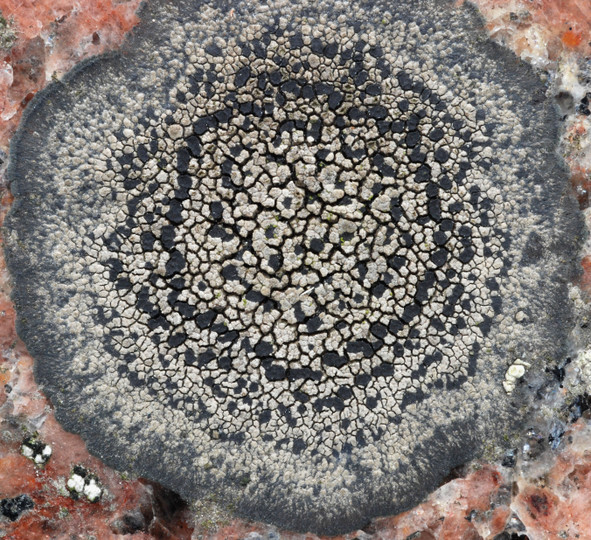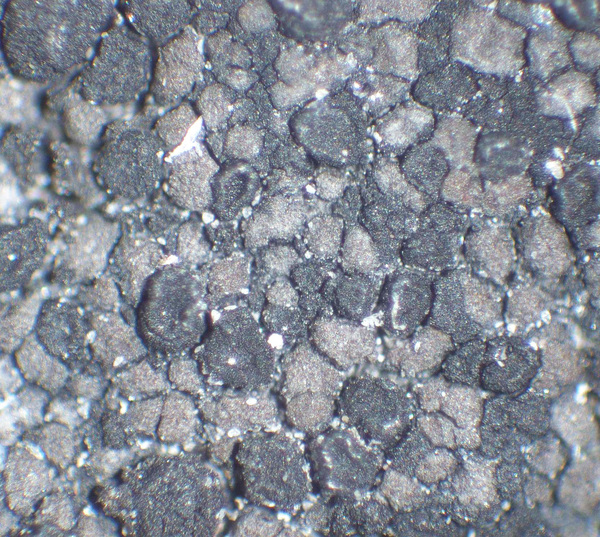Rhizocarpon distinctum Th. Fr.
Lichenogr. Scand., 2: 625, 1874.
Synonyms: Lecidea distincta (Th. Fr.) Stizenb.; Lecidea illota Sandst.; Lecidea porphyrostrota Vain.; Rhizocarpon ambiguum (Schaer.) Zahlbr.; Rhizocarpon atroalbum Arnold; Rhizocarpon danicum Galløe; Rhizocarpon illotum (Sandst.) Lettau; Rhizocarpon porphyrostrotum (Vain.) Vain.
Distribution: N - Frl (TSB 2857), TAA (Nascimbene & al. 2022), Piem (Matteucci & al. 2013, Favero-Longo & al. 2015), VA (Piervittori & Isocrono 1999, Valcuvia 2000, Piervittori & al. 2001, Matteucci & al. 2008c, 2015c), Lig (Giordani & al. 2025). C - Tosc, Umb (Genovesi & Ravera 2001, Ravera & al. 2006), Sar (Nöske 2000, Rizzi & al. 2011). S - Camp, Bas (Nimis & Tretiach 1999, Brackel & Puntillo 2023), Cal (Brackel & Puntillo 2023), Si (Brackel 2008c).
Description: Thallus crustose, episubstratic, areolate, grey brown to brown, forming up to 2-3(-5) cm wide patches often delimited by a dark prothallus, the areoles mainly angular, flat to weakly convex, usually contiguous, 0.2-0.5 mm wide. Cortex thin, with a thin epinecral layer; medulla white, I+ blue. Apothecia lecideine, black, round to angular, (0.2-)0.4-0.6(-0.8) mm across, with a more or less flat, epruinose disc and a thin, often soon excluded proper margin. Proper exciple brown-black in outer part, paler within, K+ purple-red; epithecium brown-black, opaque, K+ purple-red; hymenium colourless, (70-)120-150(-200) µm high; paraphysoids branched and anastomosing, the apical cells capitate, with dark caps; hypothecium violet-brown or olive-black, K-. Asci 8-spored, clavate, fissitunicate, with a well-developed tholus that is K/I- in lower part and K/I+ blue near the apex, lacking an ocular chamber, Rhizocarpon-type. Ascospores at first 3-septate, then submuriform, with 4-8 cells visible in optical view, long remaining hyaline (overmature spores sometimes greenish brown), ellipsoid, (16-)22-35(-40) x (8-)10-15(-18) µm, halonate. Pycnidia black, subglobose. Conidia hyaline, filiform, 6-12 µm long. Photobiont chlorococcoid. Spot tests: medulla K+ yellow, C- or C+ fleeting red, P+ orange-red. Chemistry: medulla with stictic acid (major), gyrophoric acid (minor or traces).Note: on basic siliceous rocks, often on brick and roofing tiles, with a wide altitudinal range, up to the nival belt in the Alps; sometimes parasitic, when young, on Circinaria caesiocinerea; certainly more widespread in the Alps, rarer along the Apennines.
Growth form: Crustose
Substrata: rocks
Photobiont: green algae other than Trentepohlia
Reproductive strategy: mainly sexual
Most common in areas with a humid-warm climate (e.g. most of Tyrrenian Italy)
paras (occasionally) of crustose lichens when young
Pioneer species
Commonnes-rarity: (info)
Alpine belt: very rare
Subalpine belt: rare
Oromediterranean belt: extremely rare
Montane belt: rather rare
Submediterranean belt: rare
Padanian area: absent
Humid submediterranean belt: rare
Humid mediterranean belt: absent
Dry mediterranean belt: absent

Predictive model
Herbarium samples
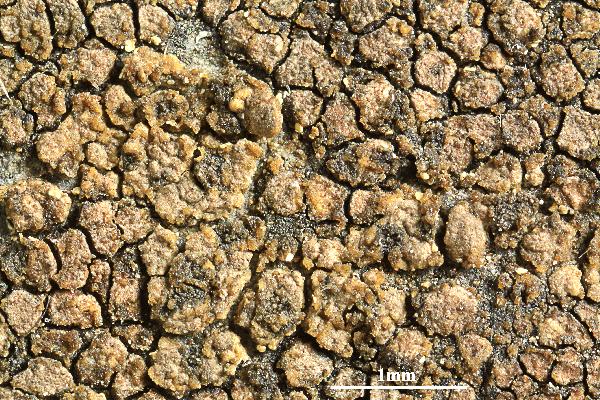

Felix Schumm - CC BY-SA 4.0
[2920], Germany, Mitteldeutschland, Bez. Nordhessen: flächendeckend
an lichtoffenen, glatten Kulmflächen schwach geneigter dunkler Schieferplatten
in der Initialphasen des Xanthoparmelietum conspersae
Klem., 350 m, pH 6,3. Waldsaumlücken am Südhang der Ederhöhen
unter dem dicken Kopf unweit Gellershausen. Leg. G. Follmann
05.1972, det. G. Follmann, conf. Tassilo Feuerer, 02.1982. Ex
G.Follmann: LICHENES EXSICCATI SELECTI A MUSEO HISTORIAE NATURALIS
CASSELENSI EDITI NR. 375.
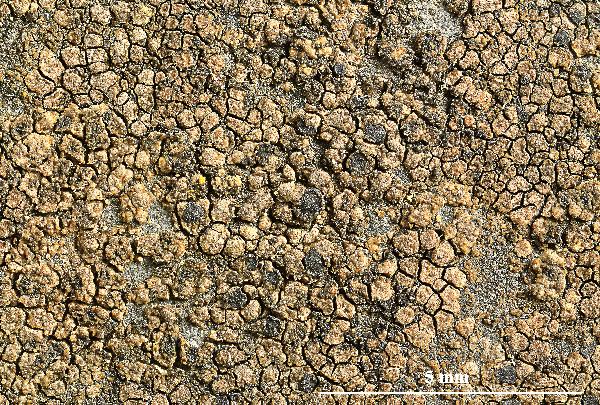

Felix Schumm - CC BY-SA 4.0
[2920], Germany, Mitteldeutschland, Bez. Nordhessen: flächendeckend
an lichtoffenen, glatten Kulmflächen schwach geneigter dunkler Schieferplatten
in der Initialphasen des Xanthoparmelietum conspersae
Klem., 350 m, pH 6,3. Waldsaumlücken am Südhang der Ederhöhen
unter dem dicken Kopf unweit Gellershausen. Leg. G. Follmann
05.1972, det. G. Follmann, conf. Tassilo Feuerer, 02.1982. Ex
G.Follmann: LICHENES EXSICCATI SELECTI A MUSEO HISTORIAE NATURALIS
CASSELENSI EDITI NR. 375.
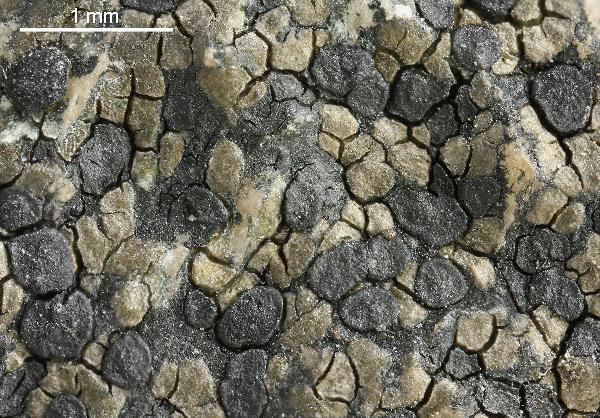

Felix Schumm - CC BY-SA 4.0
[16525], Germany, Baden-Württemberg, Schwarzwald-Baar-Kreis, an
der Stzraße zwischen St. Georgen und Triberg. 48,13460° N, 8,28587°
E, 817 m, an Granitfelsen. Leg. et det. Schumm 07.07.2010.
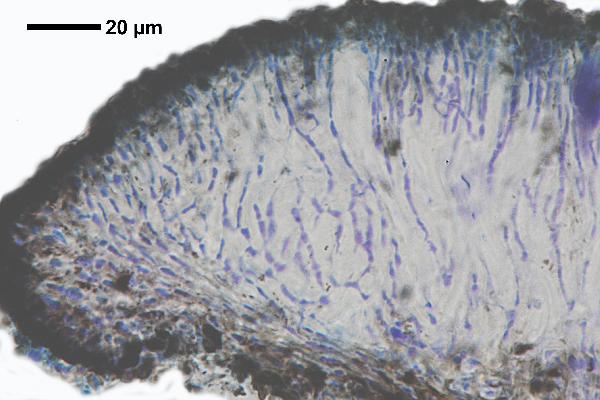

Felix Schumm - CC BY-SA 4.0
[16525], Germany, Baden-Württemberg, Schwarzwald-Baar-Kreis, an
der Stzraße zwischen St. Georgen und Triberg. 48,13460° N, 8,28587°
E, 817 m, an Granitfelsen. Leg. et det. Schumm 07.07.2010.
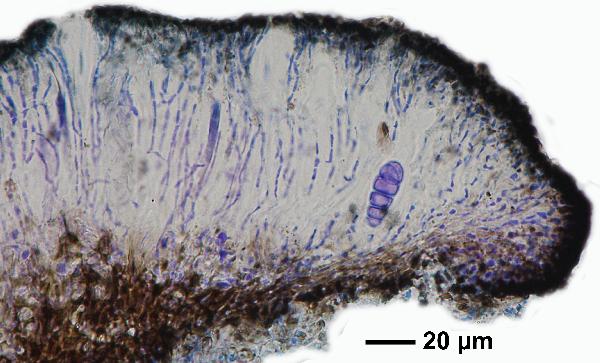

Felix Schumm - CC BY-SA 4.0
[16525], Germany, Baden-Württemberg, Schwarzwald-Baar-Kreis, an
der Stzraße zwischen St. Georgen und Triberg. 48,13460° N, 8,28587°
E, 817 m, an Granitfelsen. Leg. et det. Schumm 07.07.2010.
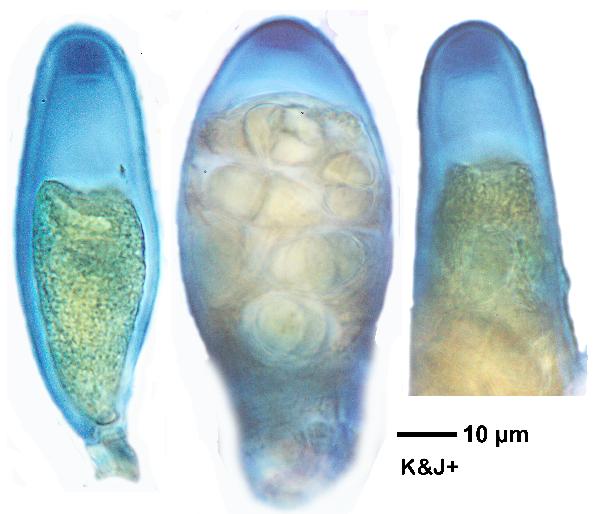

Felix Schumm - CC BY-SA 4.0
[16525], Germany, Baden-Württemberg, Schwarzwald-Baar-Kreis, an
der Stzraße zwischen St. Georgen und Triberg. 48,13460° N, 8,28587°
E, 817 m, an Granitfelsen. Leg. et det. Schumm 07.07.2010.
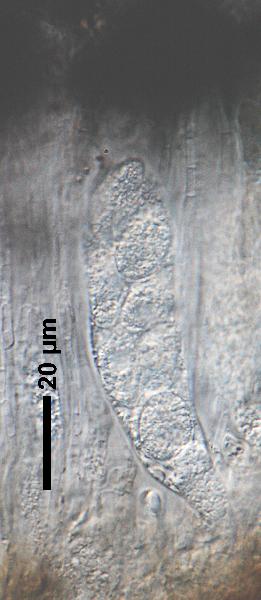

Felix Schumm - CC BY-SA 4.0
[16525], Germany, Baden-Württemberg, Schwarzwald-Baar-Kreis, an
der Stzraße zwischen St. Georgen und Triberg. 48,13460° N, 8,28587°
E, 817 m, an Granitfelsen. Leg. et det. Schumm 07.07.2010.
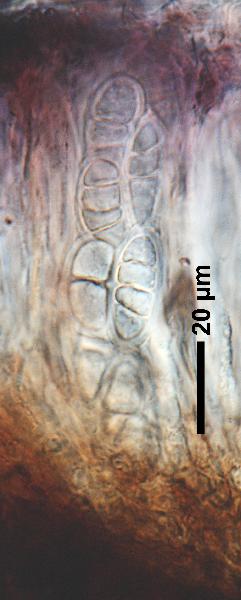

Felix Schumm - CC BY-SA 4.0
[16525], Germany, Baden-Württemberg, Schwarzwald-Baar-Kreis, an
der Stzraße zwischen St. Georgen und Triberg. 48,13460° N, 8,28587°
E, 817 m, an Granitfelsen. Leg. et det. Schumm 07.07.2010.
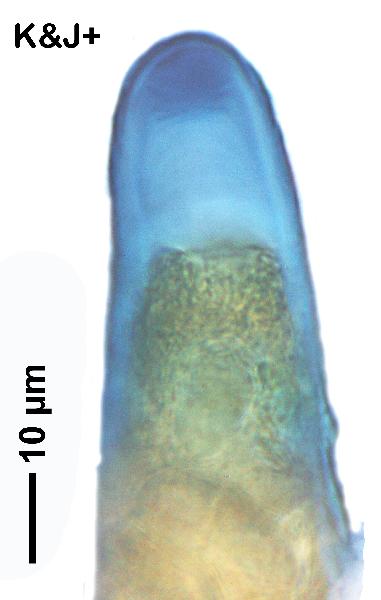

Felix Schumm - CC BY-SA 4.0
[16525], Germany, Baden-Württemberg, Schwarzwald-Baar-Kreis, an
der Stzraße zwischen St. Georgen und Triberg. 48,13460° N, 8,28587°
E, 817 m, an Granitfelsen. Leg. et det. Schumm 07.07.2010.
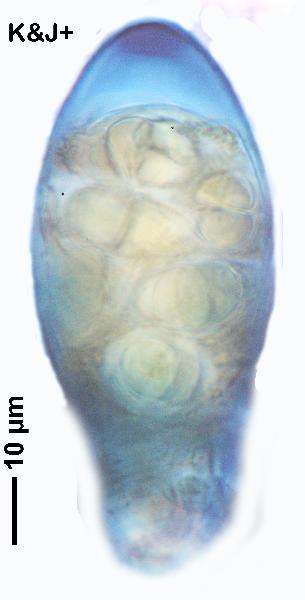

Felix Schumm - CC BY-SA 4.0
[16525], Germany, Baden-Württemberg, Schwarzwald-Baar-Kreis, an
der Stzraße zwischen St. Georgen und Triberg. 48,13460° N, 8,28587°
E, 817 m, an Granitfelsen. Leg. et det. Schumm 07.07.2010.
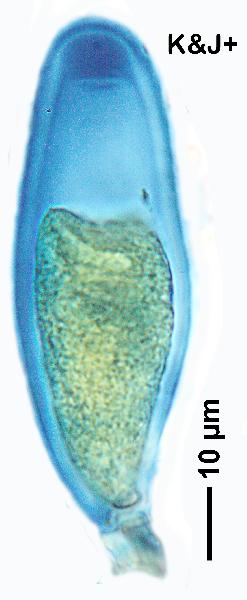

Felix Schumm - CC BY-SA 4.0
[16525], Germany, Baden-Württemberg, Schwarzwald-Baar-Kreis, an
der Stzraße zwischen St. Georgen und Triberg. 48,13460° N, 8,28587°
E, 817 m, an Granitfelsen. Leg. et det. Schumm 07.07.2010.
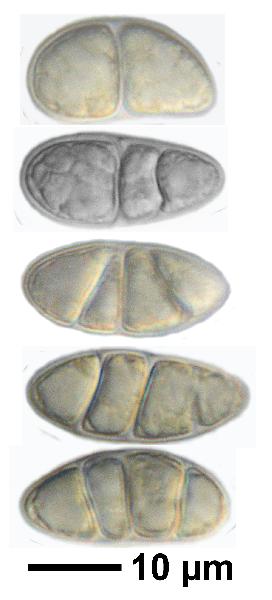

Felix Schumm - CC BY-SA 4.0
[16525], Germany, Baden-Württemberg, Schwarzwald-Baar-Kreis, an
der Stzraße zwischen St. Georgen und Triberg. 48,13460° N, 8,28587°
E, 817 m, an Granitfelsen. Leg. et det. Schumm 07.07.2010.
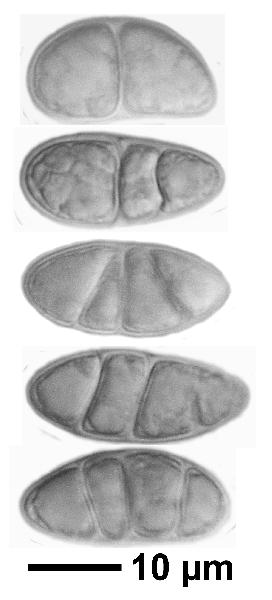

Felix Schumm - CC BY-SA 4.0
[16525], Germany, Baden-Württemberg, Schwarzwald-Baar-Kreis, an
der Stzraße zwischen St. Georgen und Triberg. 48,13460° N, 8,28587°
E, 817 m, an Granitfelsen. Leg. et det. Schumm 07.07.2010.


Felix Schumm - CC BY-SA 4.0
[16525], Germany, Baden-Württemberg, Schwarzwald-Baar-Kreis, an
der Stzraße zwischen St. Georgen und Triberg. 48,13460° N, 8,28587°
E, 817 m, an Granitfelsen. Leg. et det. Schumm 07.07.2010.
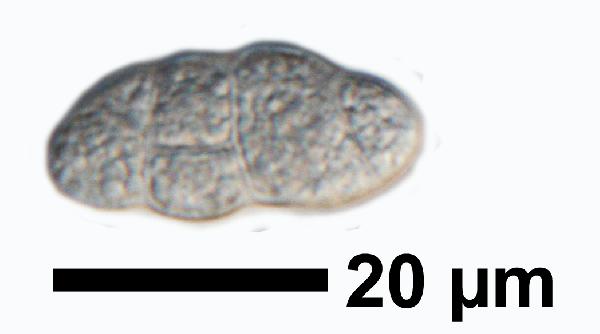

Felix Schumm - CC BY-SA 4.0
[16525], Germany, Baden-Württemberg, Schwarzwald-Baar-Kreis, an
der Stzraße zwischen St. Georgen und Triberg. 48,13460° N, 8,28587°
E, 817 m, an Granitfelsen. Leg. et det. Schumm 07.07.2010.
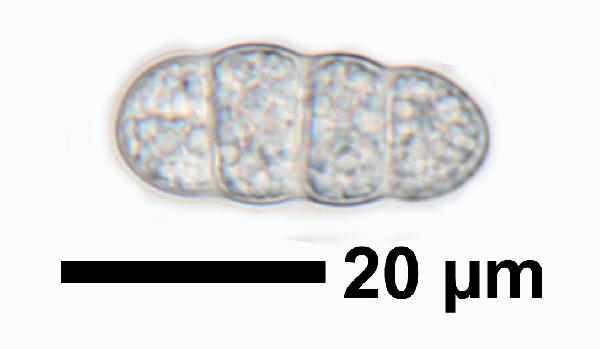

Felix Schumm - CC BY-SA 4.0
[16525], Germany, Baden-Württemberg, Schwarzwald-Baar-Kreis, an
der Stzraße zwischen St. Georgen und Triberg. 48,13460° N, 8,28587°
E, 817 m, an Granitfelsen. Leg. et det. Schumm 07.07.2010.


Felix Schumm - CC BY-SA 4.0
[16525], Germany, Baden-Württemberg, Schwarzwald-Baar-Kreis, an
der Stzraße zwischen St. Georgen und Triberg. 48,13460° N, 8,28587°
E, 817 m, an Granitfelsen. Leg. et det. Schumm 07.07.2010.
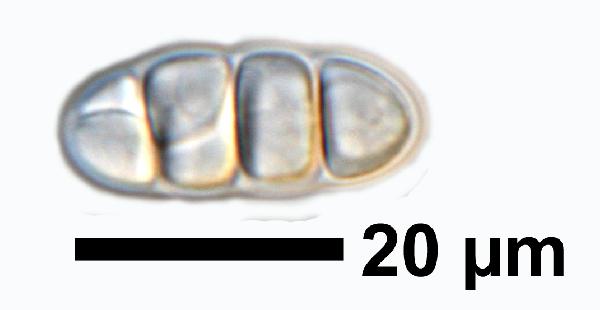

Felix Schumm - CC BY-SA 4.0
[16525], Germany, Baden-Württemberg, Schwarzwald-Baar-Kreis, an
der Stzraße zwischen St. Georgen und Triberg. 48,13460° N, 8,28587°
E, 817 m, an Granitfelsen. Leg. et det. Schumm 07.07.2010.
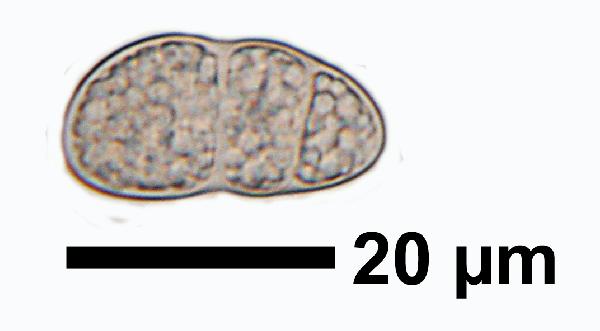

Felix Schumm - CC BY-SA 4.0
[16525], Germany, Baden-Württemberg, Schwarzwald-Baar-Kreis, an
der Stzraße zwischen St. Georgen und Triberg. 48,13460° N, 8,28587°
E, 817 m, an Granitfelsen. Leg. et det. Schumm 07.07.2010.
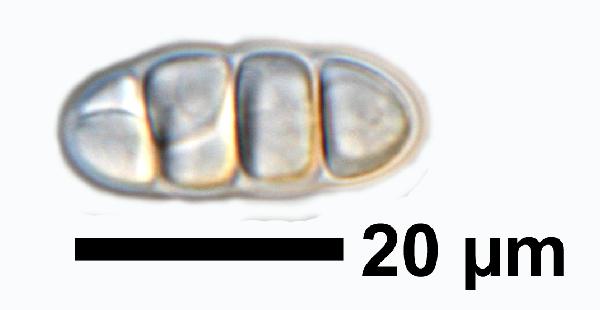

Felix Schumm - CC BY-SA 4.0
[16525], Germany, Baden-Württemberg, Schwarzwald-Baar-Kreis, an
der Stzraße zwischen St. Georgen und Triberg. 48,13460° N, 8,28587°
E, 817 m, an Granitfelsen. Leg. et det. Schumm 07.07.2010.
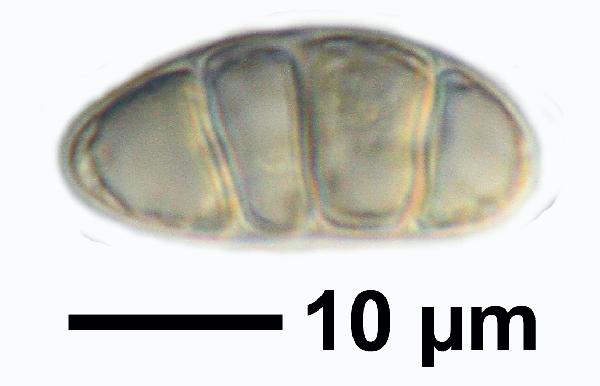

Felix Schumm - CC BY-SA 4.0
[16525], Germany, Baden-Württemberg, Schwarzwald-Baar-Kreis, an
der Stzraße zwischen St. Georgen und Triberg. 48,13460° N, 8,28587°
E, 817 m, an Granitfelsen. Leg. et det. Schumm 07.07.2010.
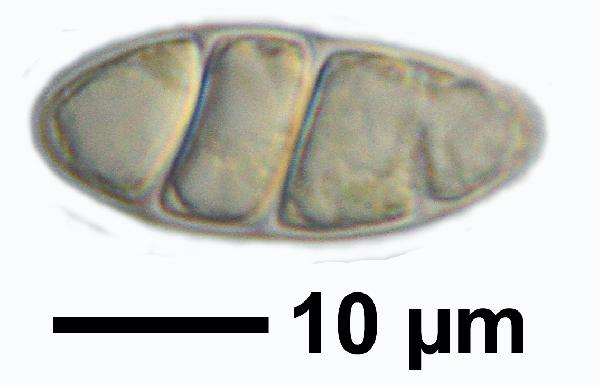

Felix Schumm - CC BY-SA 4.0
[16525], Germany, Baden-Württemberg, Schwarzwald-Baar-Kreis, an
der Stzraße zwischen St. Georgen und Triberg. 48,13460° N, 8,28587°
E, 817 m, an Granitfelsen. Leg. et det. Schumm 07.07.2010.
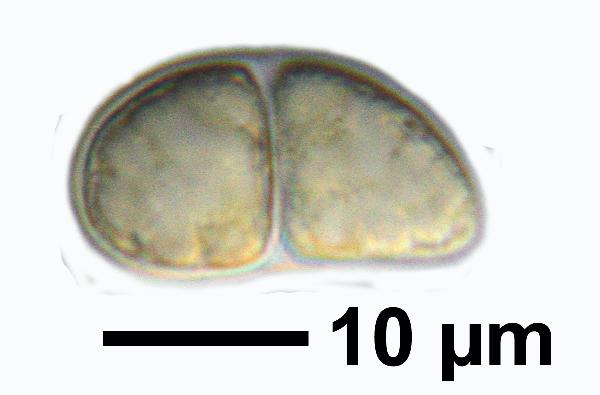

Felix Schumm - CC BY-SA 4.0
[16525], Germany, Baden-Württemberg, Schwarzwald-Baar-Kreis, an
der Stzraße zwischen St. Georgen und Triberg. 48,13460° N, 8,28587°
E, 817 m, an Granitfelsen. Leg. et det. Schumm 07.07.2010.
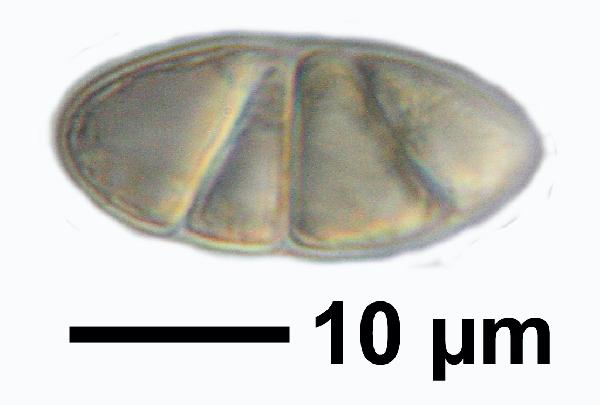

Felix Schumm - CC BY-SA 4.0
[16525], Germany, Baden-Württemberg, Schwarzwald-Baar-Kreis, an
der Stzraße zwischen St. Georgen und Triberg. 48,13460° N, 8,28587°
E, 817 m, an Granitfelsen. Leg. et det. Schumm 07.07.2010.
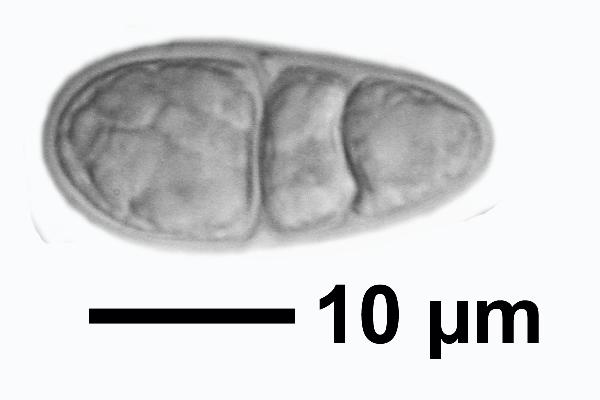

Felix Schumm - CC BY-SA 4.0
[16525], Germany, Baden-Württemberg, Schwarzwald-Baar-Kreis, an
der Stzraße zwischen St. Georgen und Triberg. 48,13460° N, 8,28587°
E, 817 m, an Granitfelsen. Leg. et det. Schumm 07.07.2010.
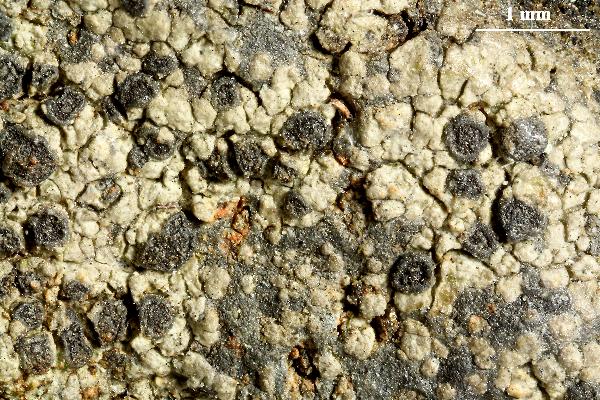

Felix Schumm - CC BY-SA 4.0
[19466], Germany, Hessen, Amöneburg bei Marburg, sonnige Basaltblöcke
in einer Hangwiese kurz vor dem Ortseingang, 50.7896° N,
8.91995° E, 324 m. Leg. F. Schumm, 01.08.2016, det. F. Schumm,
2016. - Sporen hyalin, 4/Ascus, mit 3 Quersepten und 1-3 Zellen mit je
einem Längsseptum, 22-25 x 8.9-11 μm.
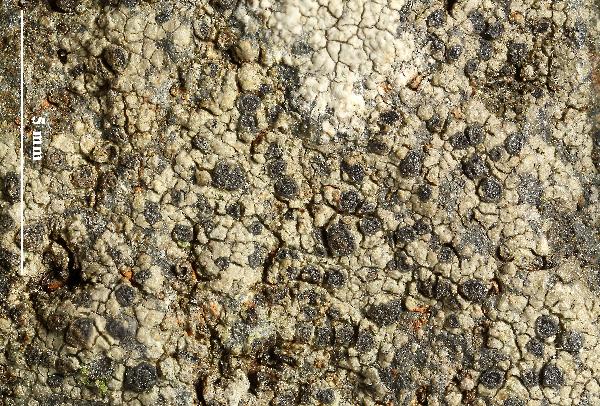

Felix Schumm - CC BY-SA 4.0
[19466], Germany, Hessen, Amöneburg bei Marburg, sonnige Basaltblöcke
in einer Hangwiese kurz vor dem Ortseingang, 50.7896° N,
8.91995° E, 324 m. Leg. F. Schumm, 01.08.2016, det. F. Schumm,
2016. - Sporen hyalin, 4/Ascus, mit 3 Quersepten und 1-3 Zellen mit je
einem Längsseptum, 22-25 x 8.9-11 μm.
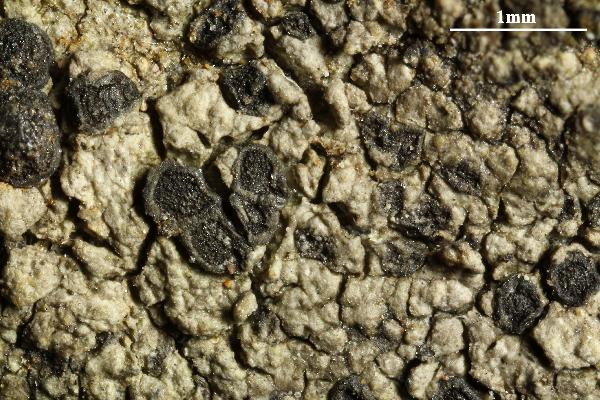

Felix Schumm - CC BY-SA 4.0
[19466], Germany, Hessen, Amöneburg bei Marburg, sonnige Basaltblöcke
in einer Hangwiese kurz vor dem Ortseingang, 50.7896° N,
8.91995° E, 324 m. Leg. F. Schumm, 01.08.2016, det. F. Schumm,
2016. - Sporen hyalin, 4/Ascus, mit 3 Quersepten und 1-3 Zellen mit je
einem Längsseptum, 22-25 x 8.9-11 μm.
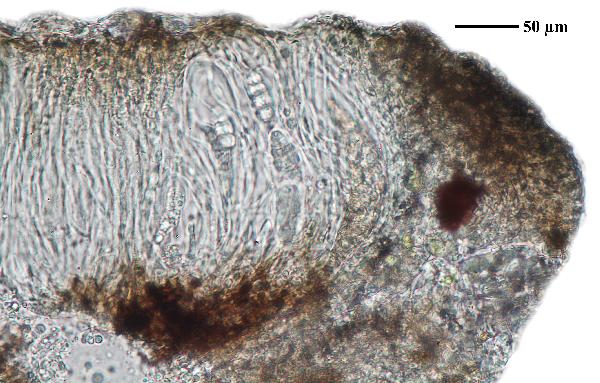

Felix Schumm - CC BY-SA 4.0
[19466], Germany, Hessen, Amöneburg bei Marburg, sonnige Basaltblöcke
in einer Hangwiese kurz vor dem Ortseingang, 50.7896° N,
8.91995° E, 324 m. Leg. F. Schumm, 01.08.2016, det. F. Schumm,
2016. - Sporen hyalin, 4/Ascus, mit 3 Quersepten und 1-3 Zellen mit je
einem Längsseptum, 22-25 x 8.9-11 μm.
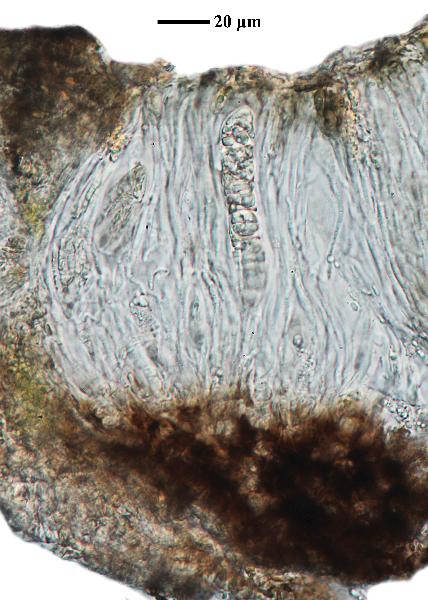

Felix Schumm - CC BY-SA 4.0
[19466], Germany, Hessen, Amöneburg bei Marburg, sonnige Basaltblöcke
in einer Hangwiese kurz vor dem Ortseingang, 50.7896° N,
8.91995° E, 324 m. Leg. F. Schumm, 01.08.2016, det. F. Schumm,
2016. - Sporen hyalin, 4/Ascus, mit 3 Quersepten und 1-3 Zellen mit je
einem Längsseptum, 22-25 x 8.9-11 μm.
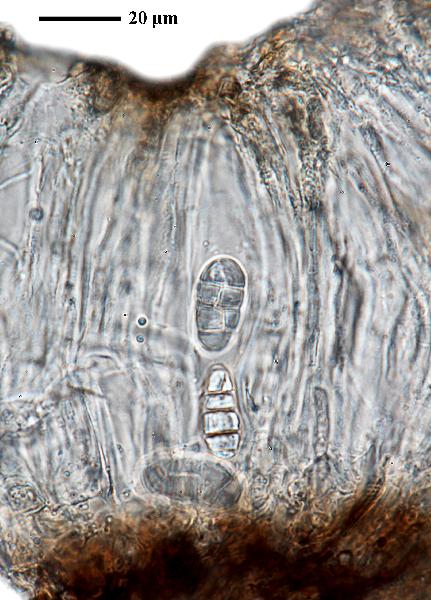

Felix Schumm - CC BY-SA 4.0
[19466], Germany, Hessen, Amöneburg bei Marburg, sonnige Basaltblöcke
in einer Hangwiese kurz vor dem Ortseingang, 50.7896° N,
8.91995° E, 324 m. Leg. F. Schumm, 01.08.2016, det. F. Schumm,
2016. - Sporen hyalin, 4/Ascus, mit 3 Quersepten und 1-3 Zellen mit je
einem Längsseptum, 22-25 x 8.9-11 μm.
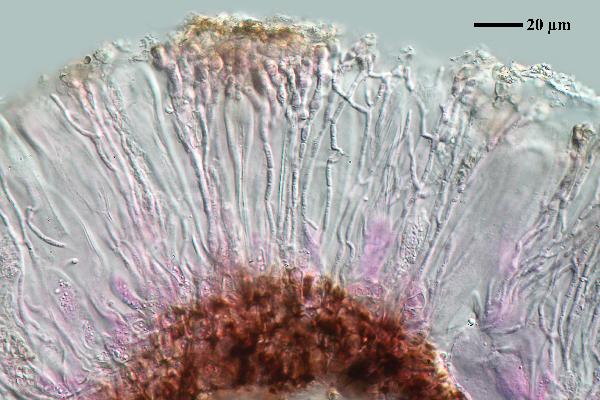

Felix Schumm - CC BY-SA 4.0
[19466], Germany, Hessen, Amöneburg bei Marburg, sonnige Basaltblöcke
in einer Hangwiese kurz vor dem Ortseingang, 50.7896° N,
8.91995° E, 324 m. Leg. F. Schumm, 01.08.2016, det. F. Schumm,
2016. - Sporen hyalin, 4/Ascus, mit 3 Quersepten und 1-3 Zellen mit je
einem Längsseptum, 22-25 x 8.9-11 μm.


Felix Schumm - CC BY-SA 4.0
[19466], Germany, Hessen, Amöneburg bei Marburg, sonnige Basaltblöcke
in einer Hangwiese kurz vor dem Ortseingang, 50.7896° N,
8.91995° E, 324 m. Leg. F. Schumm, 01.08.2016, det. F. Schumm,
2016. - Sporen hyalin, 4/Ascus, mit 3 Quersepten und 1-3 Zellen mit je
einem Längsseptum, 22-25 x 8.9-11 μm.
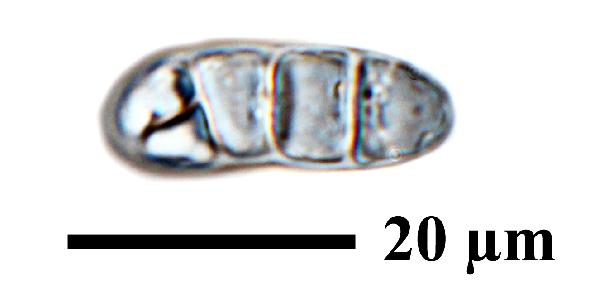

Felix Schumm - CC BY-SA 4.0
[19466], Germany, Hessen, Amöneburg bei Marburg, sonnige Basaltblöcke
in einer Hangwiese kurz vor dem Ortseingang, 50.7896° N,
8.91995° E, 324 m. Leg. F. Schumm, 01.08.2016, det. F. Schumm,
2016. - Sporen hyalin, 4/Ascus, mit 3 Quersepten und 1-3 Zellen mit je
einem Längsseptum, 22-25 x 8.9-11 μm.


Felix Schumm - CC BY-SA 4.0
[19466], Germany, Hessen, Amöneburg bei Marburg, sonnige Basaltblöcke
in einer Hangwiese kurz vor dem Ortseingang, 50.7896° N,
8.91995° E, 324 m. Leg. F. Schumm, 01.08.2016, det. F. Schumm,
2016. - Sporen hyalin, 4/Ascus, mit 3 Quersepten und 1-3 Zellen mit je
einem Längsseptum, 22-25 x 8.9-11 μm.
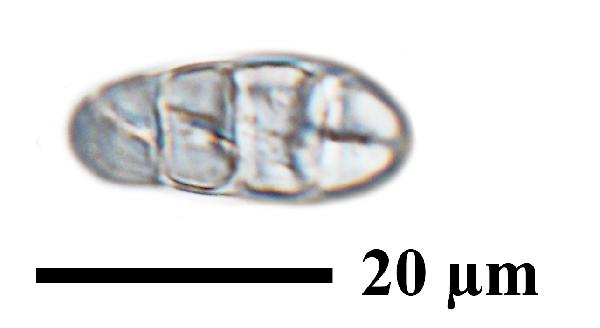

Felix Schumm - CC BY-SA 4.0
[19466], Germany, Hessen, Amöneburg bei Marburg, sonnige Basaltblöcke
in einer Hangwiese kurz vor dem Ortseingang, 50.7896° N,
8.91995° E, 324 m. Leg. F. Schumm, 01.08.2016, det. F. Schumm,
2016. - Sporen hyalin, 4/Ascus, mit 3 Quersepten und 1-3 Zellen mit je
einem Längsseptum, 22-25 x 8.9-11 μm.
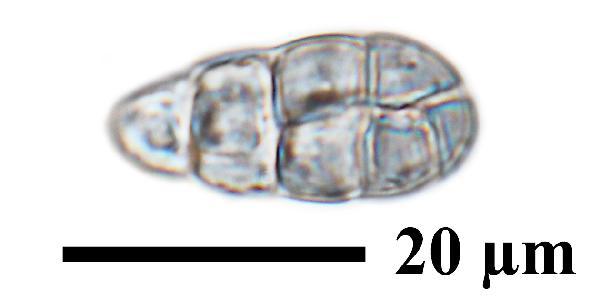

Felix Schumm - CC BY-SA 4.0
[19466], Germany, Hessen, Amöneburg bei Marburg, sonnige Basaltblöcke
in einer Hangwiese kurz vor dem Ortseingang, 50.7896° N,
8.91995° E, 324 m. Leg. F. Schumm, 01.08.2016, det. F. Schumm,
2016. - Sporen hyalin, 4/Ascus, mit 3 Quersepten und 1-3 Zellen mit je
einem Längsseptum, 22-25 x 8.9-11 μm.
Growth form: Crustose
Substrata: rocks
Photobiont: green algae other than Trentepohlia
Reproductive strategy: mainly sexual
Most common in areas with a humid-warm climate (e.g. most of Tyrrenian Italy)
paras (occasionally) of crustose lichens when young
Pioneer species
Commonnes-rarity: (info)
Alpine belt: very rare
Subalpine belt: rare
Oromediterranean belt: extremely rare
Montane belt: rather rare
Submediterranean belt: rare
Padanian area: absent
Humid submediterranean belt: rare
Humid mediterranean belt: absent
Dry mediterranean belt: absent

Predictive model
| Herbarium samples |


Felix Schumm - CC BY-SA 4.0
[2920], Germany, Mitteldeutschland, Bez. Nordhessen: flächendeckend an lichtoffenen, glatten Kulmflächen schwach geneigter dunkler Schieferplatten in der Initialphasen des Xanthoparmelietum conspersae Klem., 350 m, pH 6,3. Waldsaumlücken am Südhang der Ederhöhen unter dem dicken Kopf unweit Gellershausen. Leg. G. Follmann 05.1972, det. G. Follmann, conf. Tassilo Feuerer, 02.1982. Ex G.Follmann: LICHENES EXSICCATI SELECTI A MUSEO HISTORIAE NATURALIS CASSELENSI EDITI NR. 375.


Felix Schumm - CC BY-SA 4.0
[2920], Germany, Mitteldeutschland, Bez. Nordhessen: flächendeckend an lichtoffenen, glatten Kulmflächen schwach geneigter dunkler Schieferplatten in der Initialphasen des Xanthoparmelietum conspersae Klem., 350 m, pH 6,3. Waldsaumlücken am Südhang der Ederhöhen unter dem dicken Kopf unweit Gellershausen. Leg. G. Follmann 05.1972, det. G. Follmann, conf. Tassilo Feuerer, 02.1982. Ex G.Follmann: LICHENES EXSICCATI SELECTI A MUSEO HISTORIAE NATURALIS CASSELENSI EDITI NR. 375.


Felix Schumm - CC BY-SA 4.0
[16525], Germany, Baden-Württemberg, Schwarzwald-Baar-Kreis, an der Stzraße zwischen St. Georgen und Triberg. 48,13460° N, 8,28587° E, 817 m, an Granitfelsen. Leg. et det. Schumm 07.07.2010.


Felix Schumm - CC BY-SA 4.0
[16525], Germany, Baden-Württemberg, Schwarzwald-Baar-Kreis, an der Stzraße zwischen St. Georgen und Triberg. 48,13460° N, 8,28587° E, 817 m, an Granitfelsen. Leg. et det. Schumm 07.07.2010.


Felix Schumm - CC BY-SA 4.0
[16525], Germany, Baden-Württemberg, Schwarzwald-Baar-Kreis, an der Stzraße zwischen St. Georgen und Triberg. 48,13460° N, 8,28587° E, 817 m, an Granitfelsen. Leg. et det. Schumm 07.07.2010.


Felix Schumm - CC BY-SA 4.0
[16525], Germany, Baden-Württemberg, Schwarzwald-Baar-Kreis, an der Stzraße zwischen St. Georgen und Triberg. 48,13460° N, 8,28587° E, 817 m, an Granitfelsen. Leg. et det. Schumm 07.07.2010.


Felix Schumm - CC BY-SA 4.0
[16525], Germany, Baden-Württemberg, Schwarzwald-Baar-Kreis, an der Stzraße zwischen St. Georgen und Triberg. 48,13460° N, 8,28587° E, 817 m, an Granitfelsen. Leg. et det. Schumm 07.07.2010.


Felix Schumm - CC BY-SA 4.0
[16525], Germany, Baden-Württemberg, Schwarzwald-Baar-Kreis, an der Stzraße zwischen St. Georgen und Triberg. 48,13460° N, 8,28587° E, 817 m, an Granitfelsen. Leg. et det. Schumm 07.07.2010.


Felix Schumm - CC BY-SA 4.0
[16525], Germany, Baden-Württemberg, Schwarzwald-Baar-Kreis, an der Stzraße zwischen St. Georgen und Triberg. 48,13460° N, 8,28587° E, 817 m, an Granitfelsen. Leg. et det. Schumm 07.07.2010.


Felix Schumm - CC BY-SA 4.0
[16525], Germany, Baden-Württemberg, Schwarzwald-Baar-Kreis, an der Stzraße zwischen St. Georgen und Triberg. 48,13460° N, 8,28587° E, 817 m, an Granitfelsen. Leg. et det. Schumm 07.07.2010.


Felix Schumm - CC BY-SA 4.0
[16525], Germany, Baden-Württemberg, Schwarzwald-Baar-Kreis, an der Stzraße zwischen St. Georgen und Triberg. 48,13460° N, 8,28587° E, 817 m, an Granitfelsen. Leg. et det. Schumm 07.07.2010.


Felix Schumm - CC BY-SA 4.0
[16525], Germany, Baden-Württemberg, Schwarzwald-Baar-Kreis, an der Stzraße zwischen St. Georgen und Triberg. 48,13460° N, 8,28587° E, 817 m, an Granitfelsen. Leg. et det. Schumm 07.07.2010.


Felix Schumm - CC BY-SA 4.0
[16525], Germany, Baden-Württemberg, Schwarzwald-Baar-Kreis, an der Stzraße zwischen St. Georgen und Triberg. 48,13460° N, 8,28587° E, 817 m, an Granitfelsen. Leg. et det. Schumm 07.07.2010.


Felix Schumm - CC BY-SA 4.0
[16525], Germany, Baden-Württemberg, Schwarzwald-Baar-Kreis, an der Stzraße zwischen St. Georgen und Triberg. 48,13460° N, 8,28587° E, 817 m, an Granitfelsen. Leg. et det. Schumm 07.07.2010.


Felix Schumm - CC BY-SA 4.0
[16525], Germany, Baden-Württemberg, Schwarzwald-Baar-Kreis, an der Stzraße zwischen St. Georgen und Triberg. 48,13460° N, 8,28587° E, 817 m, an Granitfelsen. Leg. et det. Schumm 07.07.2010.


Felix Schumm - CC BY-SA 4.0
[16525], Germany, Baden-Württemberg, Schwarzwald-Baar-Kreis, an der Stzraße zwischen St. Georgen und Triberg. 48,13460° N, 8,28587° E, 817 m, an Granitfelsen. Leg. et det. Schumm 07.07.2010.


Felix Schumm - CC BY-SA 4.0
[16525], Germany, Baden-Württemberg, Schwarzwald-Baar-Kreis, an der Stzraße zwischen St. Georgen und Triberg. 48,13460° N, 8,28587° E, 817 m, an Granitfelsen. Leg. et det. Schumm 07.07.2010.


Felix Schumm - CC BY-SA 4.0
[16525], Germany, Baden-Württemberg, Schwarzwald-Baar-Kreis, an der Stzraße zwischen St. Georgen und Triberg. 48,13460° N, 8,28587° E, 817 m, an Granitfelsen. Leg. et det. Schumm 07.07.2010.


Felix Schumm - CC BY-SA 4.0
[16525], Germany, Baden-Württemberg, Schwarzwald-Baar-Kreis, an der Stzraße zwischen St. Georgen und Triberg. 48,13460° N, 8,28587° E, 817 m, an Granitfelsen. Leg. et det. Schumm 07.07.2010.


Felix Schumm - CC BY-SA 4.0
[16525], Germany, Baden-Württemberg, Schwarzwald-Baar-Kreis, an der Stzraße zwischen St. Georgen und Triberg. 48,13460° N, 8,28587° E, 817 m, an Granitfelsen. Leg. et det. Schumm 07.07.2010.


Felix Schumm - CC BY-SA 4.0
[16525], Germany, Baden-Württemberg, Schwarzwald-Baar-Kreis, an der Stzraße zwischen St. Georgen und Triberg. 48,13460° N, 8,28587° E, 817 m, an Granitfelsen. Leg. et det. Schumm 07.07.2010.


Felix Schumm - CC BY-SA 4.0
[16525], Germany, Baden-Württemberg, Schwarzwald-Baar-Kreis, an der Stzraße zwischen St. Georgen und Triberg. 48,13460° N, 8,28587° E, 817 m, an Granitfelsen. Leg. et det. Schumm 07.07.2010.


Felix Schumm - CC BY-SA 4.0
[16525], Germany, Baden-Württemberg, Schwarzwald-Baar-Kreis, an der Stzraße zwischen St. Georgen und Triberg. 48,13460° N, 8,28587° E, 817 m, an Granitfelsen. Leg. et det. Schumm 07.07.2010.


Felix Schumm - CC BY-SA 4.0
[16525], Germany, Baden-Württemberg, Schwarzwald-Baar-Kreis, an der Stzraße zwischen St. Georgen und Triberg. 48,13460° N, 8,28587° E, 817 m, an Granitfelsen. Leg. et det. Schumm 07.07.2010.


Felix Schumm - CC BY-SA 4.0
[16525], Germany, Baden-Württemberg, Schwarzwald-Baar-Kreis, an der Stzraße zwischen St. Georgen und Triberg. 48,13460° N, 8,28587° E, 817 m, an Granitfelsen. Leg. et det. Schumm 07.07.2010.


Felix Schumm - CC BY-SA 4.0
[19466], Germany, Hessen, Amöneburg bei Marburg, sonnige Basaltblöcke in einer Hangwiese kurz vor dem Ortseingang, 50.7896° N, 8.91995° E, 324 m. Leg. F. Schumm, 01.08.2016, det. F. Schumm, 2016. - Sporen hyalin, 4/Ascus, mit 3 Quersepten und 1-3 Zellen mit je einem Längsseptum, 22-25 x 8.9-11 μm.


Felix Schumm - CC BY-SA 4.0
[19466], Germany, Hessen, Amöneburg bei Marburg, sonnige Basaltblöcke in einer Hangwiese kurz vor dem Ortseingang, 50.7896° N, 8.91995° E, 324 m. Leg. F. Schumm, 01.08.2016, det. F. Schumm, 2016. - Sporen hyalin, 4/Ascus, mit 3 Quersepten und 1-3 Zellen mit je einem Längsseptum, 22-25 x 8.9-11 μm.


Felix Schumm - CC BY-SA 4.0
[19466], Germany, Hessen, Amöneburg bei Marburg, sonnige Basaltblöcke in einer Hangwiese kurz vor dem Ortseingang, 50.7896° N, 8.91995° E, 324 m. Leg. F. Schumm, 01.08.2016, det. F. Schumm, 2016. - Sporen hyalin, 4/Ascus, mit 3 Quersepten und 1-3 Zellen mit je einem Längsseptum, 22-25 x 8.9-11 μm.


Felix Schumm - CC BY-SA 4.0
[19466], Germany, Hessen, Amöneburg bei Marburg, sonnige Basaltblöcke in einer Hangwiese kurz vor dem Ortseingang, 50.7896° N, 8.91995° E, 324 m. Leg. F. Schumm, 01.08.2016, det. F. Schumm, 2016. - Sporen hyalin, 4/Ascus, mit 3 Quersepten und 1-3 Zellen mit je einem Längsseptum, 22-25 x 8.9-11 μm.


Felix Schumm - CC BY-SA 4.0
[19466], Germany, Hessen, Amöneburg bei Marburg, sonnige Basaltblöcke in einer Hangwiese kurz vor dem Ortseingang, 50.7896° N, 8.91995° E, 324 m. Leg. F. Schumm, 01.08.2016, det. F. Schumm, 2016. - Sporen hyalin, 4/Ascus, mit 3 Quersepten und 1-3 Zellen mit je einem Längsseptum, 22-25 x 8.9-11 μm.


Felix Schumm - CC BY-SA 4.0
[19466], Germany, Hessen, Amöneburg bei Marburg, sonnige Basaltblöcke in einer Hangwiese kurz vor dem Ortseingang, 50.7896° N, 8.91995° E, 324 m. Leg. F. Schumm, 01.08.2016, det. F. Schumm, 2016. - Sporen hyalin, 4/Ascus, mit 3 Quersepten und 1-3 Zellen mit je einem Längsseptum, 22-25 x 8.9-11 μm.


Felix Schumm - CC BY-SA 4.0
[19466], Germany, Hessen, Amöneburg bei Marburg, sonnige Basaltblöcke in einer Hangwiese kurz vor dem Ortseingang, 50.7896° N, 8.91995° E, 324 m. Leg. F. Schumm, 01.08.2016, det. F. Schumm, 2016. - Sporen hyalin, 4/Ascus, mit 3 Quersepten und 1-3 Zellen mit je einem Längsseptum, 22-25 x 8.9-11 μm.


Felix Schumm - CC BY-SA 4.0
[19466], Germany, Hessen, Amöneburg bei Marburg, sonnige Basaltblöcke in einer Hangwiese kurz vor dem Ortseingang, 50.7896° N, 8.91995° E, 324 m. Leg. F. Schumm, 01.08.2016, det. F. Schumm, 2016. - Sporen hyalin, 4/Ascus, mit 3 Quersepten und 1-3 Zellen mit je einem Längsseptum, 22-25 x 8.9-11 μm.


Felix Schumm - CC BY-SA 4.0
[19466], Germany, Hessen, Amöneburg bei Marburg, sonnige Basaltblöcke in einer Hangwiese kurz vor dem Ortseingang, 50.7896° N, 8.91995° E, 324 m. Leg. F. Schumm, 01.08.2016, det. F. Schumm, 2016. - Sporen hyalin, 4/Ascus, mit 3 Quersepten und 1-3 Zellen mit je einem Längsseptum, 22-25 x 8.9-11 μm.


Felix Schumm - CC BY-SA 4.0
[19466], Germany, Hessen, Amöneburg bei Marburg, sonnige Basaltblöcke in einer Hangwiese kurz vor dem Ortseingang, 50.7896° N, 8.91995° E, 324 m. Leg. F. Schumm, 01.08.2016, det. F. Schumm, 2016. - Sporen hyalin, 4/Ascus, mit 3 Quersepten und 1-3 Zellen mit je einem Längsseptum, 22-25 x 8.9-11 μm.


Felix Schumm - CC BY-SA 4.0
[19466], Germany, Hessen, Amöneburg bei Marburg, sonnige Basaltblöcke in einer Hangwiese kurz vor dem Ortseingang, 50.7896° N, 8.91995° E, 324 m. Leg. F. Schumm, 01.08.2016, det. F. Schumm, 2016. - Sporen hyalin, 4/Ascus, mit 3 Quersepten und 1-3 Zellen mit je einem Längsseptum, 22-25 x 8.9-11 μm.


 INDEX FUNGORUM
INDEX FUNGORUM
 GBIF
GBIF
 DOLICHENS
DOLICHENS
